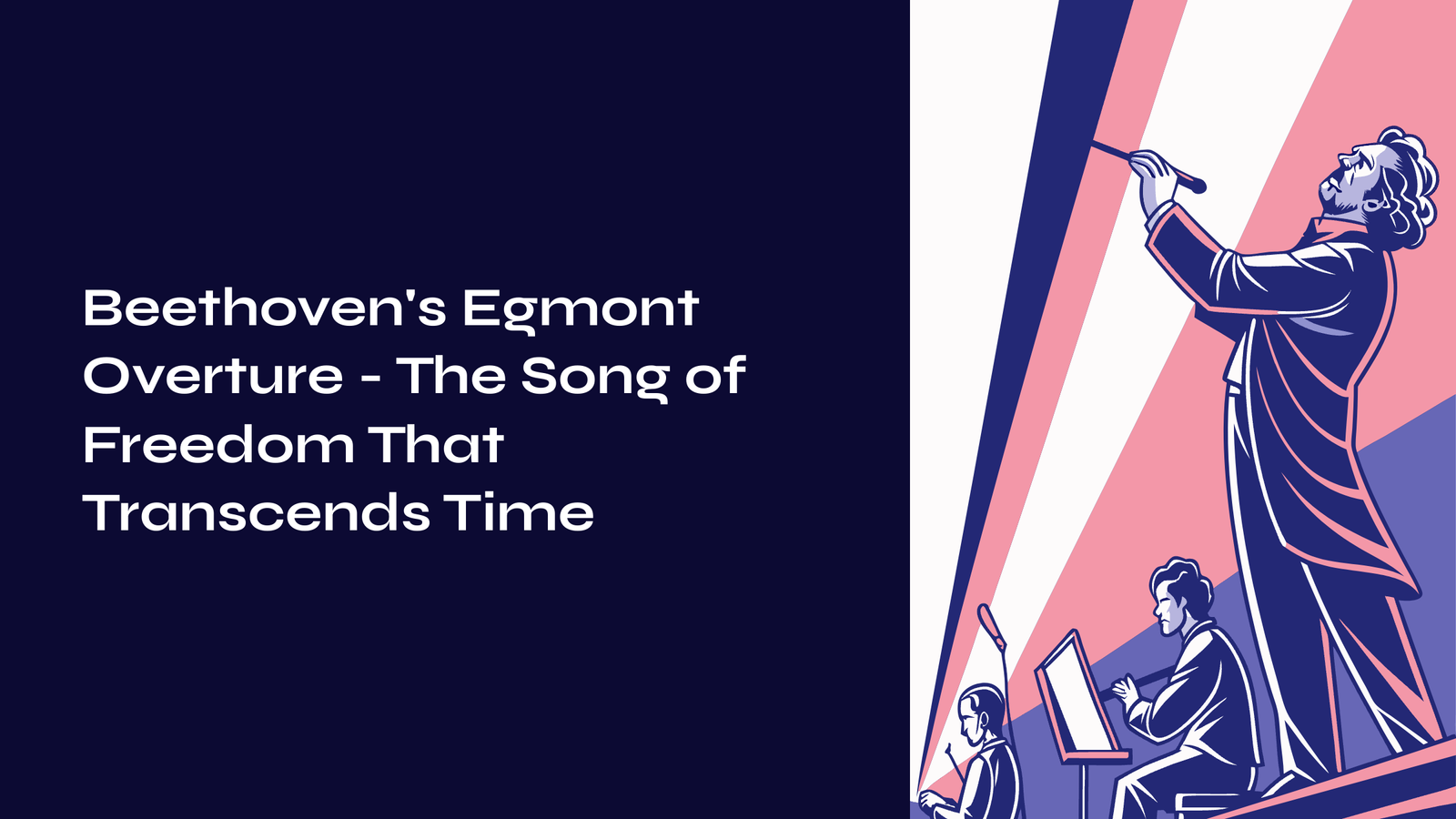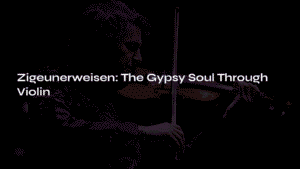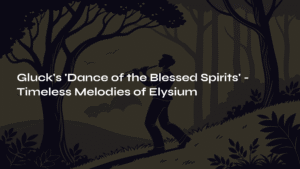Table of Contents
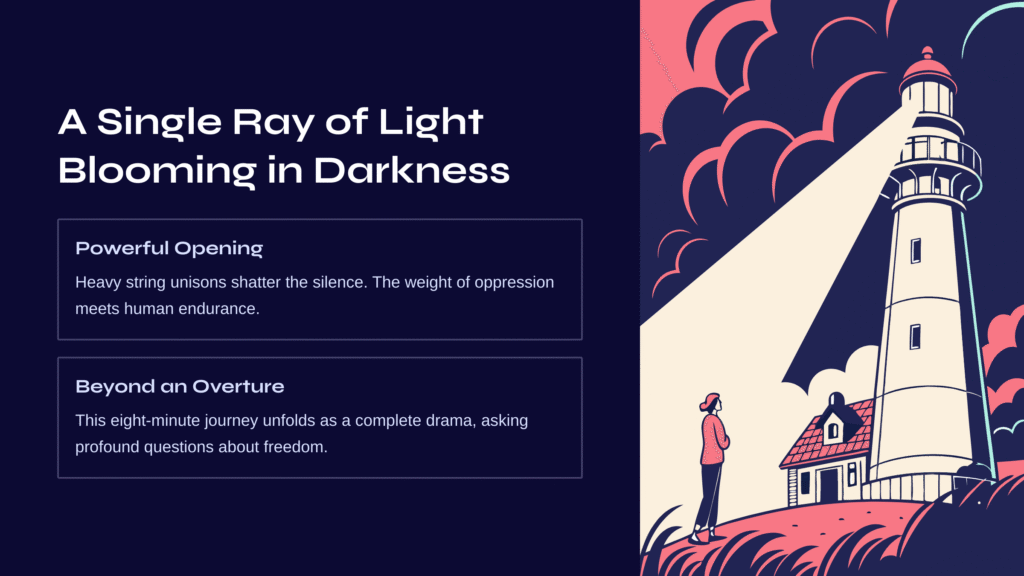
A Single Ray of Light Blooming in Darkness
Some music carries the weight of time as it reaches us. Beethoven’s Egmont Overture is precisely such a work. From the first note to the final chord, this music transcends mere overture to unfold as a complete drama before us.
The moment heavy string unisons shatter the silence, I always find myself holding my breath. Within that sound lies the weight of oppression, yet simultaneously hidden is the human will to endure it. In this brief eight-minute journey, Beethoven seems to be asking us: What is true freedom, and what can we do to achieve it?
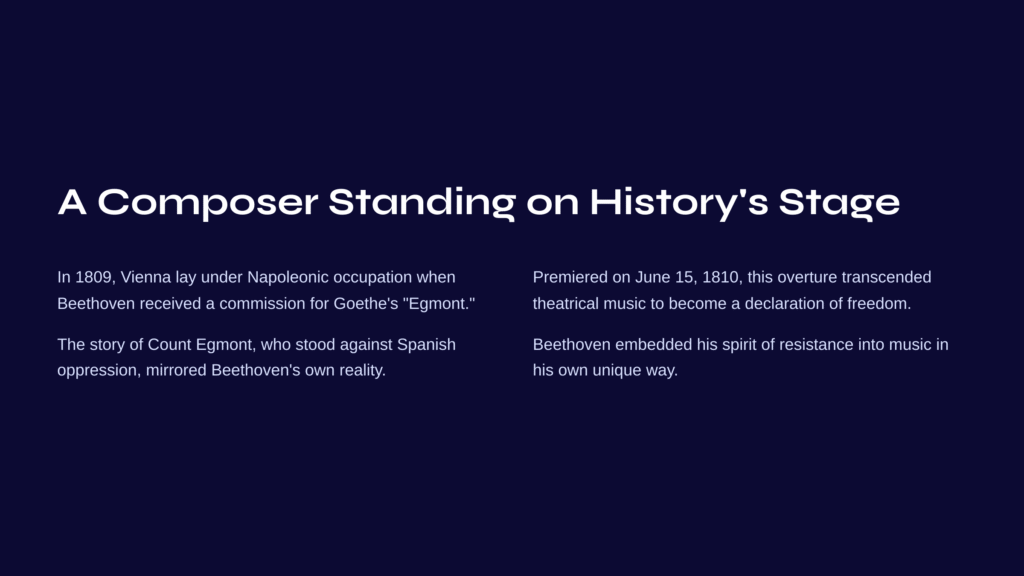
A Composer Standing on History’s Stage
In 1809, Vienna lay under Napoleonic occupation. It was precisely during this period that Beethoven received a commission to compose incidental music for Goethe’s tragedy “Egmont.” The story of Count Egmont of the 16th-century Netherlands, who stood against Spanish oppression and became a martyr. For Beethoven, this story was surely more than mere historical event.
His own reality bore too striking a resemblance to the dramatic situation. In Vienna under French occupation, Beethoven embedded his spirit of resistance into music in his own unique way. This overture, premiered on June 15, 1810, transcended simple theatrical music to become a declaration of freedom that pierces through time.
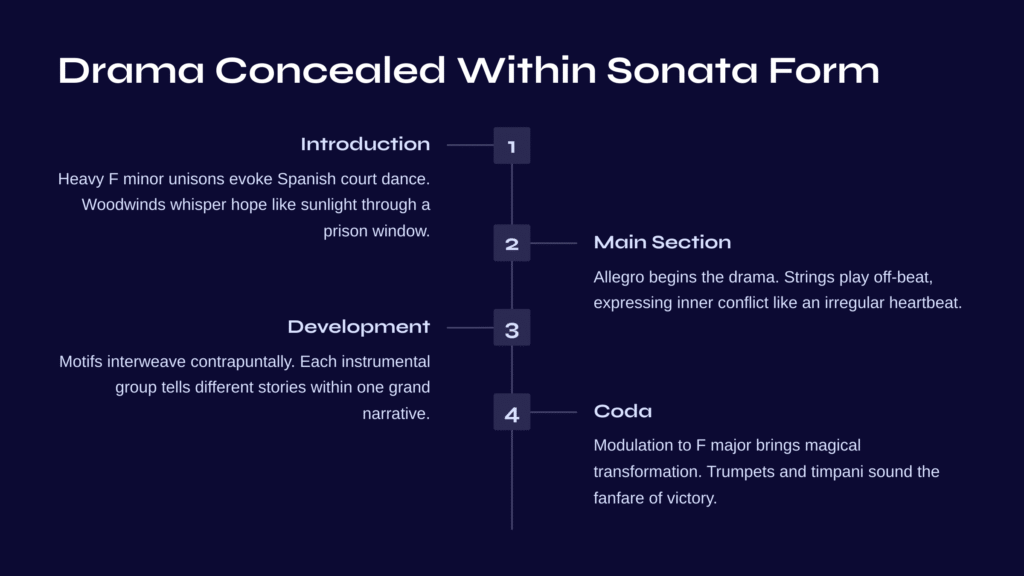
Drama Concealed Within Sonata Form
Introduction: A Landscape Shadowed by Oppression
The introduction begins with heavy F minor unisons, evoking the sarabande rhythm of Spanish court dance. Within the slow 3/2 tempo, the sounds exhaled by the strings resemble the heavy footsteps of oppressors. Yet even in this darkness, quiet dialogue among the woodwinds begins.
I particularly love these moments that sound like whispers of hope. In the passages where violins carefully trace melodies, it feels like watching sunlight filtering through a prison’s small window.
Main Section: The Stage Where Soul’s Struggle Unfolds
When the Allegro enters, the real drama begins. The first theme is presented with strings playing off-beat, and this unstable rhythmic sense perfectly expresses inner conflict. It’s like hearing the irregular heartbeat pounding within one’s chest.
In the second theme, the full orchestra provides a heroic response. Here Beethoven’s genius shines, for he didn’t merely create a “heroic” melody, but captured in musical notes the emotion of that moment when despair transforms into hope.
In the development section, previously presented motifs interweave contrapuntally as tension reaches its peak. Each instrumental group seems to tell different stories, yet ultimately creates one grand epic narrative—a process that is truly magnificent.
Coda: The Moment Victory’s Anthem Resounds
And finally, the sudden modulation to F major in the coda. This moment is truly magical. As it shifts to 4/4 Allegro con brio, all previous darkness transforms instantly into light. When trumpets and timpani sound the fanfare of victory, I always feel a thrill run through me.
Though Egmont meets death in the drama, Beethoven declares his spiritual victory through music. Isn’t this the most powerful force that music possesses? The power to sing ideals that transcend reality.
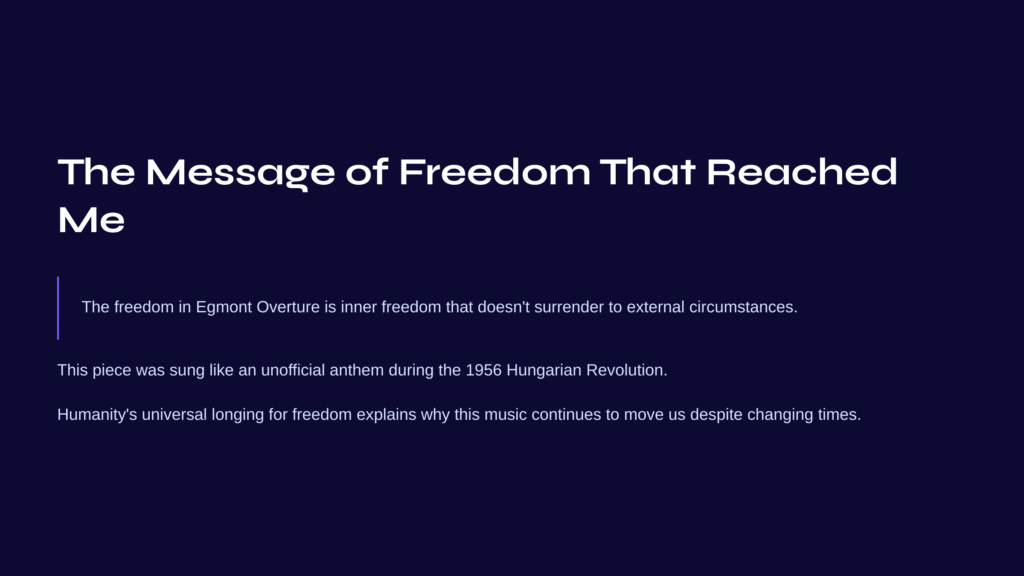
The Message of Freedom That Reached Me
Each time I listen to this piece, I find myself wondering: Did the “freedom” Beethoven sought to express mean simply political liberation? Or was he speaking of something more fundamental—the liberation of the human spirit?
Listening to the music, I sense it’s closer to the latter. The freedom in Egmont Overture is inner freedom that doesn’t surrender to external circumstances, spiritual freedom that never abandons hope even in desperate reality. The fact that this piece was sung like an unofficial anthem during the 1956 Hungarian Revolution proves this point.
The reason this music continues to move us despite changing times is because humanity’s longing for freedom is universal. Beethoven seems to be speaking to people of all eras, transcending his own time.
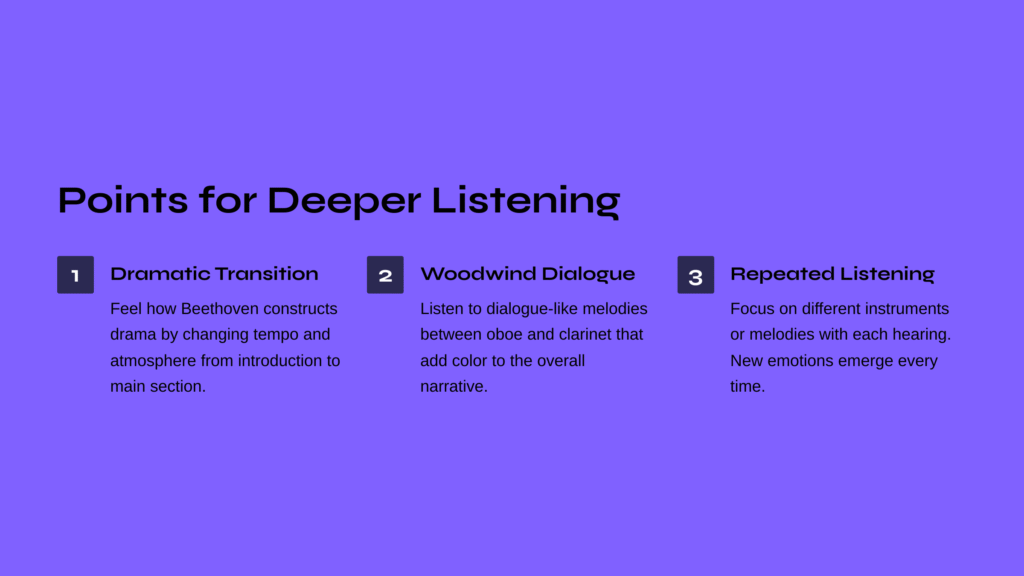
Points for Deeper Listening
When you listen to this piece, I’d like you to pay attention to several key points.
First, don’t miss the dramatic transition from introduction to main section. You’ll be able to vividly feel how Beethoven constructs drama by changing tempo and atmosphere.
Second, listen carefully to the role of the woodwinds. I particularly want you to savor how the dialogue-like melodies between oboe and clarinet add color to the overall narrative.
Finally, this is a work that reveals more with each repeated listening. Don’t try to grasp everything at once; with each hearing, focus on different instruments or different melodies. It will offer new emotions every time.
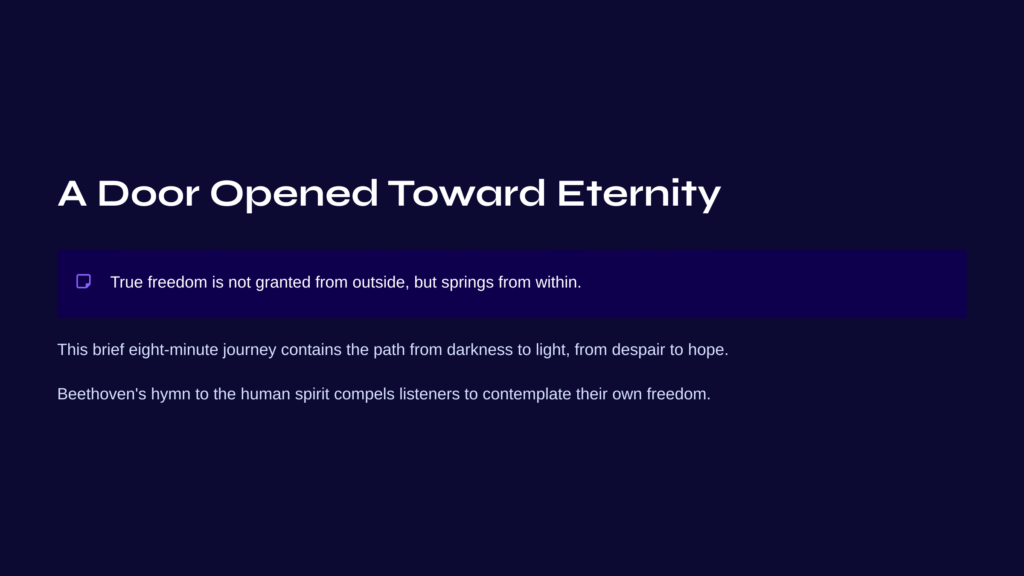
A Door Opened Toward Eternity
Beethoven’s Egmont Overture transcends simple theatrical music to become a hymn singing the triumph of human spirit. This work, which perfectly contains the journey from darkness to light, from despair to hope, from oppression to freedom within a brief eight minutes, compels listeners to contemplate their own freedom.
When the music ends and silence flows, we realize: True freedom is not granted from outside, but springs from within. And this longing for freedom will continue from Beethoven’s era through our time and beyond.
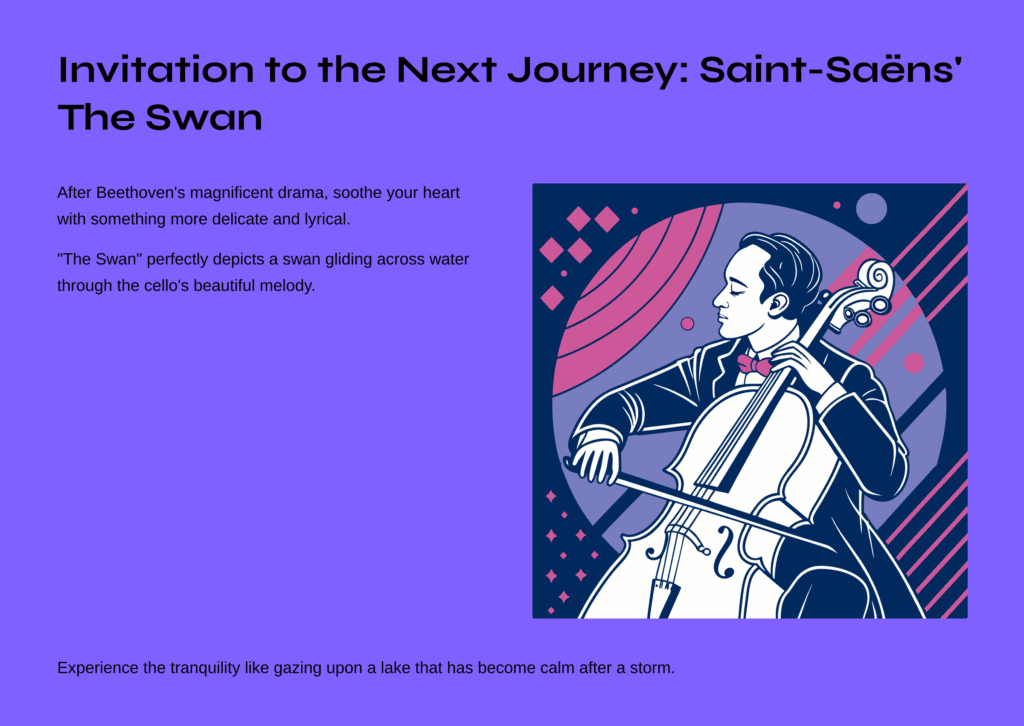
Invitation to the Next Journey: Saint-Saëns’ The Swan
After experiencing the magnificent drama of Egmont Overture, how about soothing your heart with something more delicate and lyrical? Saint-Saëns’ “The Swan” from “Carnival of the Animals” perfectly depicts a swan gliding gracefully across water through the cello’s beautiful melody.
The quiet beauty of Saint-Saëns encountered after Beethoven’s intense energy will provide tranquility like gazing upon a lake that has become calm after a storm. Music is such magical art that allows us to experience various spectrums of emotion.
